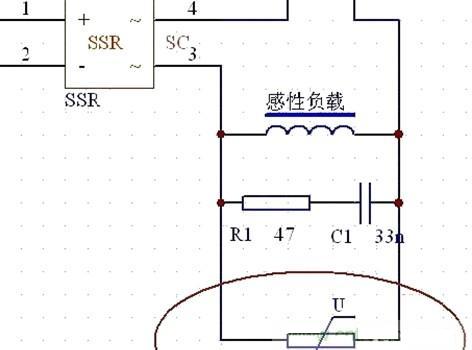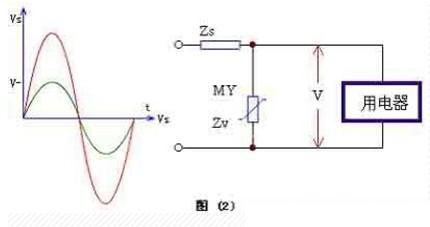![]()
Probe current voltage pin 420*4450 head diameter 5.0 over current current and voltage pin
![]()
Shunuo varistor / ESD varistor / product complete / Sunlord first-class agent
![]()
NCP15WB473F03RC MURATA Murata thermistor original spot
Varistors are commonly used in parallel within a circuit to protect sensitive components from voltage spikes. When an abrupt voltage change occurs, the varistor triggers a short circuit, which blows the fuse and safeguards the system. These devices are widely applied in power supply circuits for overvoltage protection and regulation. Today, we’ll explore some practical insights and techniques on how to effectively use varistors in real-world applications.
Key parameters to understand when designing a circuit with varistors:
1. Varistor Voltage (UN or U1mA): This is the voltage at which the varistor starts conducting when a DC current of 1 mA is applied. It's often referred to as U1mA, and the typical tolerance is ±10%. In testing, if the voltage drops by 10% from its nominal value, it may indicate a failure.
2. Maximum Continuous Working Voltage (UC): This is the highest AC or DC voltage that the varistor can handle continuously. Typically, UC ≈ 0.64 × U1mA for AC and 0.83 × U1mA for DC.
3. Maximum Clamp Voltage (VC): This is the peak voltage across the varistor when a specified 8/20 μs impulse current is applied. It determines the level of protection provided during surges.
4. Leakage Current (Il): This is the small current that flows through the varistor under normal operating conditions. It’s usually measured at 0.83 × U1mA (or sometimes 0.75 × U1mA). A stable leakage current is more important than its absolute value. After impact tests or under high temperature, the leakage should not increase by more than double to be considered acceptable.
Method and Steps:
1. Calculating Varistor Voltage: The formula U1mA = K × Uac is commonly used, where K depends on the quality of the power supply. For areas with stable power, K is around 2, while in regions with unstable power, it can go up to 3. For a 220–240V AC supply, a varistor with a rating of 470–620V is typically selected. Choosing a higher voltage can reduce failure rates but may slightly increase residual voltage.

2. Calculating Nominal Discharge Current: The varistor’s nominal discharge current must exceed the expected surge current. It’s generally calculated as about 30% of the maximum surge current (0.3 × IP), based on the varistor’s calibration curve.

3. Parallel Connection of Varistors: If a single varistor doesn’t meet the required discharge current, multiple units can be connected in parallel. Even if the current requirement is met, using multiple varistors in parallel can help lower the clamping voltage. However, it’s crucial to match the varistors closely—parameters like ΔU1mA ≤ 3V and Δα ≤ 3 must be consistent to ensure even current distribution.

Precautions:
The thermal fuse must have good thermal coupling with the varistor. In case of failure (high impedance short circuit), the heat generated will trigger the fuse, isolating the faulty component. However, under high-frequency overvoltage, the varistor may short-circuit without blowing the fuse, potentially causing a fire. To prevent this, a surge-resistant power fuse can be added in series with each varistor. Single fuses may not blow properly during aging failures, so additional protection is recommended.
Amplifier Board
The Digital Amplifier Module is a crucial component in the field of audio, delivering exceptional audio amplification for various audio devices. Leveraging digital signal processing technology, it enables precise manipulation of audio signals, achieving performance enhancements that are difficult to match with traditional analog
Power Amplifiers.​
Working Principle​
The operation of the Digital Amplifier Module is highly sophisticated. First, upon receiving an analog audio signal, the module rapidly converts it into a digital signal through an Analog-to-Digital Converter (ADC). These digital signals then undergo a series of meticulous processes in the Digital Signal Processor (DSP), such as filtering, equalization, and reverb, to optimize the sound quality. Subsequently, the processed digital signals are converted back into analog signals by a Digital-to-Analog Converter (DAC), and finally, power-amplified by the output stage amplifier to drive the speaker to produce sound. For instance, in a common Class-D amplifier, the power output transistors operate in a switching state, controlling the power output by adjusting the duty cycle of a fixed-frequency rectangular pulse, which significantly improves efficiency.​
Product Advantages​
.High Efficiency and Energy Conservation:Compared with traditional analog power amplifiers, digital amplifier modules are extremely efficient, generally reaching over 90%. Take a certain digital power amplifier module as an example; when outputting the same power, its energy consumption is only about half that of a traditional analog power amplifier, greatly reducing energy consumption. This makes it especially suitable for devices with strict power consumption requirements.​
.High-Fidelity Sound Quality:With advanced digital signal processing technology, it can precisely process audio signals, effectively reducing signal distortion and restoring the original details of the audio, thus providing a high-fidelity auditory experience. In professional music recording and playback equipment, digital amplifier modules can accurately reproduce every note of the music, making the audience feel as if they were at the live performance.​
.Compact Size and Lightweight:Thanks to the digital design and highly integrated chip technology, digital amplifier modules have been significantly reduced in size and weight. This feature has led to their extensive application in portable audio devices, such as Bluetooth speakers and headphone amplifiers, making them convenient for users to carry.​
Application Scenarios​
.Home Audio Systems:It can be used to build home theaters and Hi-Fi audio systems, providing users with an immersive music and movie sound experience. Whether enjoying the thrilling sound effects of a blockbuster movie or listening to beautiful music, digital amplifier modules can deliver excellent audio performance.​
.Car Audio:In the limited interior space of a car, where high power is required, digital amplifier modules can effectively enhance the sound quality of car audio systems with their high efficiency and compact size, creating a high-quality auditory environment for drivers and passengers.​
.Professional Audio Fields:In places like recording studios and performance stages, where extremely high requirements are placed on the sound quality and stability of audio equipment, the high-fidelity and reliability of digital amplifier modules make them an ideal choice for professional audio devices, meeting the stringent audio quality standards of professionals.​
In conclusion, with its unique advantages, the Digital Amplifier Module plays a vital role in the audio field, offering high-quality audio amplification solutions for audio enthusiasts and professionals alike, and continuously driving the development and innovation of audio technology.
Â
Amplifier circuit board,amplifier board 1000 watt,subwoofer amplifier board,bluetooth amplifier board,mini amplifier board
Guangzhou Aiwo Audio Technology Co., LTD , https://www.aiwoaudio.com


